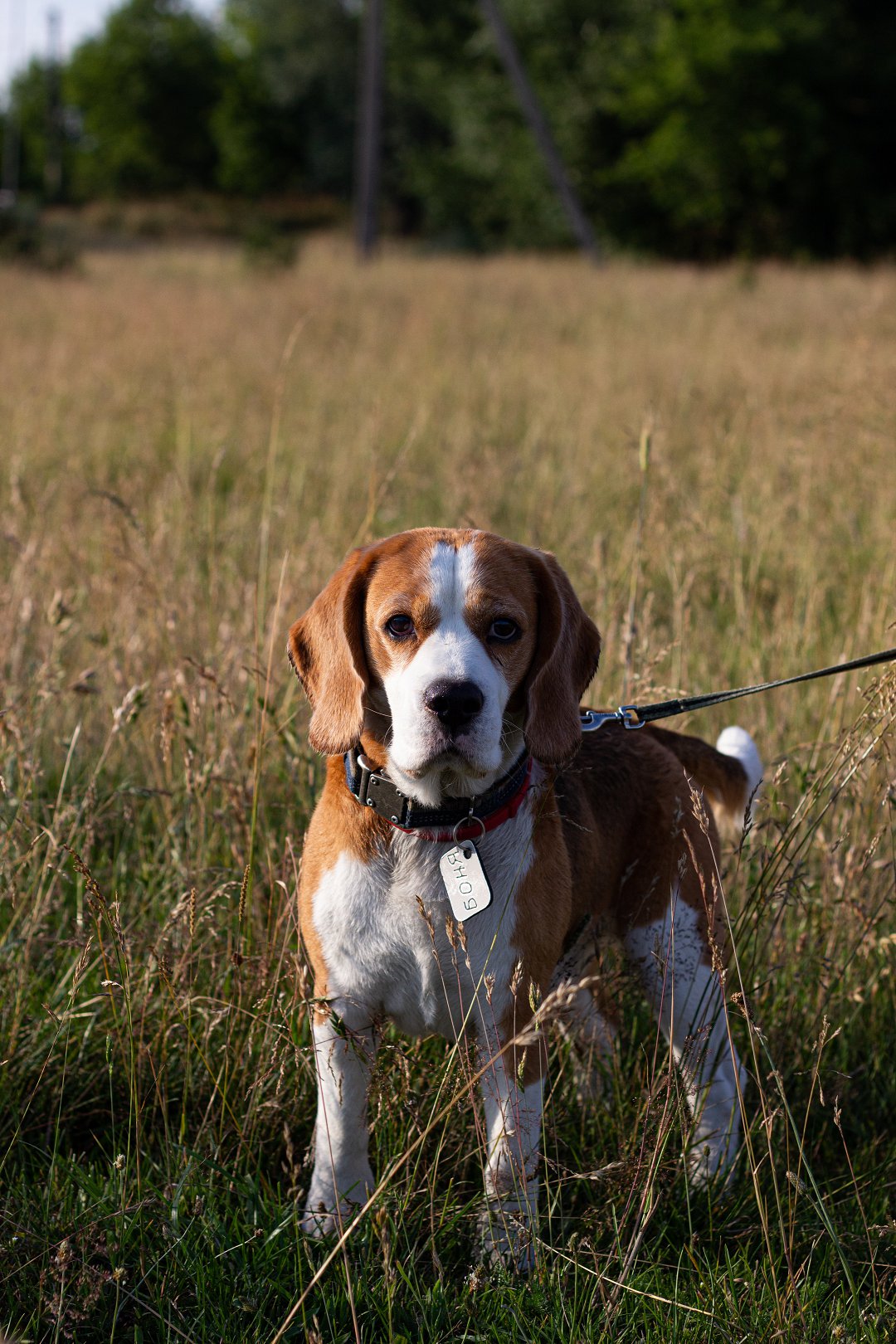Table of Contents
- 1 Introduction: Gradually Reducing Treat Dependency: Effective Techniques for Beagle Training
- 2 Step-by-Step Guide to Weaning a Beagle off Treats During Training
- 3 Mastering Beagle Training: Tips to Minimize Reliance on Treats
- 4 FAQs About: How to Wean a Beagle off Treats When Training
- 4.1 Can I completely stop using treats during beagle training?
- 4.2 How can I start reducing treat dependency during beagle training?
- 4.3 What are some alternative rewards I can use instead of treats?
- 4.4 How can I incorporate clicker training to wean my beagle off treats?
- 4.5 it important to maintain consistency when reducing treat dependency?
- 4.6 How can I manage distractions while reducing treat dependency?
Introduction: Gradually Reducing Treat Dependency: Effective Techniques for Beagle Training
Are you wondering how to wean a Beagle off treats when training? We understand that as a responsible dog owner, you want to ensure your furry friend’s obedience without relying solely on treats. In this article, we will provide you with effective techniques to gradually reduce treat dependency during Beagle training. By implementing these strategies, you can achieve long-term success and a well-behaved Beagle companion. So, let’s dive in and explore the step-by-step guide to weaning your Beagle off treats, while still maintaining a positive and rewarding training experience.
When it comes to Beagle training, it’s important to remember that treat training is just one piece of the puzzle. While treats can be a valuable tool for positive reinforcement, relying solely on them can create a dependency that may hinder your Beagle’s progress in the long run. Therefore, it’s crucial to introduce alternative training methods and techniques to minimize treat reliance. In the following sections, we will provide you with practical tips to help you achieve this goal. So, let’s move on to the next heading and discover the step-by-step guide to weaning your Beagle off treats during training.
Step-by-Step Guide to Weaning a Beagle off Treats During Training
When it comes to training your Beagle, treats can be a valuable tool for positive reinforcement. However, it is important to gradually reduce their dependency on treats to ensure long-term success. Here is a step-by-step guide on how to wean a Beagle off treats when training:
1. Start with high-value treats
Begin your training sessions with high-value treats that your Beagle finds irresistible. This will help create a positive association with training and motivate them to learn. Use treats that are small in size, so your Beagle doesn’t get too full during the training session.
2. Introduce intermittent rewards
Once your Beagle is familiar with the basic commands and has shown consistent progress, start introducing intermittent rewards. Instead of giving a treat for every correct behavior, reward them every few repetitions. This will help them understand that treats are not guaranteed for every action.
3. Transition to praise and petting
As your Beagle becomes more proficient in their training, gradually replace treats with verbal praise and physical affection. Use a cheerful tone and lavish them with praise when they perform a command correctly. This will reinforce the idea that good behavior is rewarded with positive attention.
4. Use life rewards
Life rewards are everyday rewards that your Beagle enjoys, such as going for a walk, playing with their favorite toy, or getting belly rubs. Start incorporating these rewards into your training sessions instead of treats. For example, after your Beagle successfully follows a command, reward them with a short play session or a walk around the block.
5. Increase difficulty and distractions
To further reduce treat dependency, gradually increase the difficulty level of the training exercises and introduce distractions. This will challenge your Beagle to focus on the task at hand rather than relying on treats. By practicing in different environments and with various distractions, your Beagle will become more reliable in their obedience without the need for treats.
Remember, weaning a Beagle off treats when training requires patience, consistency, and positive reinforcement. By following these steps and gradually reducing their dependency on treats, you can ensure that your Beagle becomes a well-trained and obedient companion.
Next, let’s explore some tips to minimize reliance on treats during Beagle training.
Mastering Beagle Training: Tips to Minimize Reliance on Treats
When it comes to beagle training, treats are often used as a powerful motivator for positive reinforcement. However, it is important to gradually reduce treat dependency to ensure that your beagle responds to commands even without the presence of treats. Here are some effective techniques to help you minimize reliance on treats during training:
1. Start with High-Value Treats
During the initial stages of training, it is crucial to use high-value treats that your beagle finds extremely rewarding. This will help establish a strong association between the desired behavior and the treat. As your beagle becomes more proficient in the training exercises, gradually switch to lower-value treats or even non-food rewards such as praise or playtime.
2. Incorporate Variable Rewards
To prevent your beagle from becoming too treat-dependent, introduce variable rewards during training sessions. Instead of giving a treat for every correct response, randomly reward your beagle with treats, praise, or play. This helps teach your beagle that rewards are not always guaranteed, encouraging them to focus on the desired behavior rather than the treat itself.
3. Fade out Treats Gradually
Once your beagle has mastered a particular command or behavior, start reducing the frequency of treat rewards. Instead of giving a treat every time, gradually increase the number of correct responses required before giving a treat. Eventually, you can transition to intermittent treat rewards, where treats are given only occasionally. This helps your beagle understand that treats are not always necessary for good behavior.
4. Use Life Rewards
Life rewards are rewards that are naturally occurring in your beagle’s daily life. These can include going for a walk, playing with their favorite toy, or receiving attention and affection from you. By incorporating life rewards into your training sessions, you can shift the focus from treats to other forms of positive reinforcement. This helps your beagle understand that good behavior leads to enjoyable experiences, even without treats.
5. Focus on Training Progress and Consistency
Consistency is key when it comes to training any dog, including beagles. By consistently using positive reinforcement techniques and providing rewards, your beagle will learn to associate good behavior with positive outcomes. Celebrate your beagle’s progress and achievements, reinforcing the idea that they are doing well even without treats.
6. Manage Training Distractions
To minimize reliance on treats, it is important to gradually expose your beagle to different distractions during training sessions. Start with a quiet and controlled environment, and gradually introduce distractions such as noises, other animals, or people. By gradually increasing the level of distractions, your beagle will learn to focus on your commands and instructions, regardless of the presence of treats.
By following these tips, you can effectively wean your beagle off treats during training sessions. Remember, the goal is to have a well-behaved beagle that responds to your commands and cues, even in the absence of treats. With patience, consistency, and the right training techniques, you can achieve this and strengthen the bond between you and your beagle.
FAQs About: How to Wean a Beagle off Treats When Training
Can I completely stop using treats during beagle training?
Yes, it is possible to gradually reduce and eventually eliminate the use of treats during beagle training. However, it is important to do it gradually and ensure that your beagle is responding well to other forms of positive reinforcement.
How can I start reducing treat dependency during beagle training?
To start reducing treat dependency, you can begin by gradually decreasing the frequency of treat rewards. Start by rewarding every other correct behavior or every few repetitions, and gradually increase the intervals between treat rewards as your beagle becomes more proficient in the desired behavior.
What are some alternative rewards I can use instead of treats?
Instead of treats, you can use verbal praise, petting, or a favorite toy as alternative rewards during beagle training. Experiment with different types of rewards to find what motivates your beagle the most. Remember, the reward should be something your beagle finds valuable.
How can I incorporate clicker training to wean my beagle off treats?
Clicker training can be a helpful tool in weaning your beagle off treats. Initially, you can continue using treats alongside the clicker to reinforce the association between the click sound and the reward. Over time, you can gradually replace the treats with other rewards while still using the clicker as a marker for desired behaviors.
it important to maintain consistency when reducing treat dependency?
Yes, consistency is key when reducing treat dependency during beagle training. Ensure that everyone involved in the training process follows the same approach and uses consistent cues, rewards, and expectations. This will help your beagle understand what is expected of them and promote faster progress.
How can I manage distractions while reducing treat dependency?
Managing distractions is crucial when reducing treat dependency. Start training in a low-distraction environment and gradually increase the level of distractions as your beagle becomes more reliable in responding to commands without treats. Use positive reinforcement techniques to redirect your beagle’s attention back to you when distractions arise.






Leave a Reply